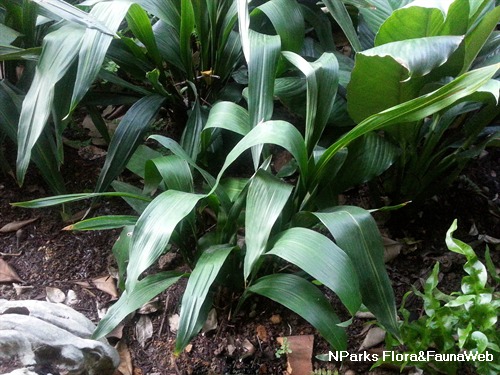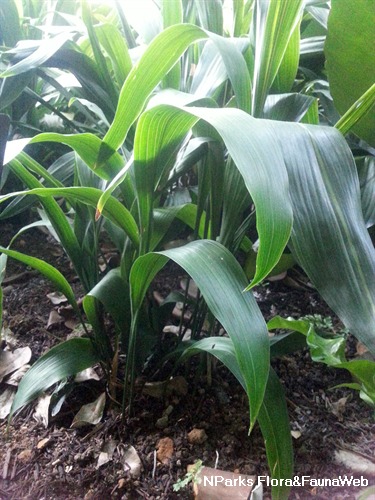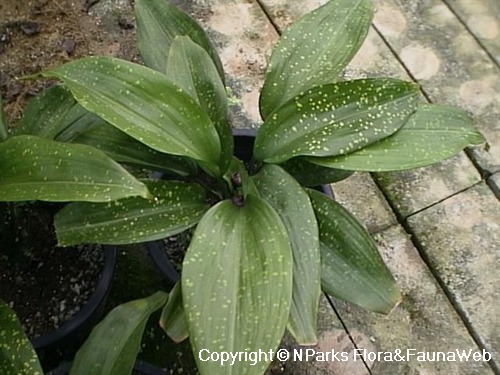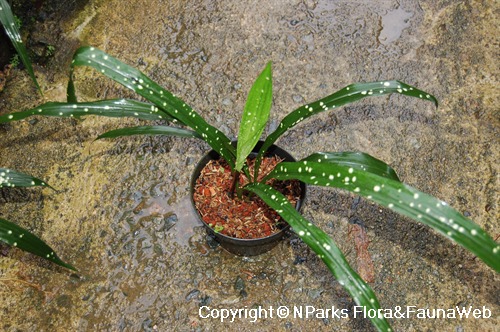
Back
Aspidistra elatior
| Family Name: | Asparagaceae |
| Synonyms: | Aspidistra variegata |
| Common Name: | Bar-room Plant, Cast-iron Plant |
Name
Classifications and Characteristics
| Plant Division | Angiosperms (Flowering Seed Plants) (Monocotyledon) |
|---|---|
| Plant Growth Form | Shrub |
| Lifespan (in Singapore) | Perennial |
| Mode of Nutrition | Autotrophic |
Biogeography
| Native Distribution | China, Japan |
|---|---|
| Native Habitat | Terrestrial |
Description and Ethnobotany
| Growth Form | It is a stemless, evergreen foliage plant which grows upright to 1 m tall. |
|---|---|
| Foliage | Leaves are lanceolate, glossy, dark green, slightly leathery, petiole 5 - 35 cm long and stiff. |
| Stems | Rhizomes, about 5 - 10 mm thick. |
| Flowers | Solitary, perianth purple to dark-purple, sometimes pink, bell-shaped. |
| Habitat | It grows well under poor light condition, not direct sunlight. |
| Cultivation | It is cultivated mostly for its reputation of withstanding neglect, which gives the common name of cast-iron plant. |
| Etymology | The genus Aspidistra means small-shield, with reference to the stigmatic head. The specific epithet elatior means taller. |
Landscaping Features
| Landscaping | Suitable for growing indoors and in containers. |
|---|---|
| Desirable Plant Features | Ornamental Foliage |
| Landscape Uses | Small Gardens, Flowerbed / Border, Interiorscape/ Indoor Plant |
Plant Care and Propagation
| Light Preference | Semi-Shade, Full Shade |
|---|---|
| Water Preference | Moderate Water |
| Plant Growth Rate | Moderate |
| Rootzone Tolerance | Drought Tolerant, Well-Drained Soils, Fertile Loamy Soils |
| Maintenance Requirements | Low |
| Propagation Method | Division |
Foliar
| Foliage Retention | Evergreen |
|---|---|
| Mature Foliage Colour(s) | Green |
| Foliar Margin | Entire |
Image Repository
Others
| Master ID | 1932 |
|---|---|
| Species ID | 3224 |
| Flora Disclaimer | The information in this website has been compiled from reliable sources, such as reference works on medicinal plants. It is not a substitute for medical advice or treatment and NParks does not purport to provide any medical advice. Readers should always consult his/her physician before using or consuming a plant for medicinal purposes. |




